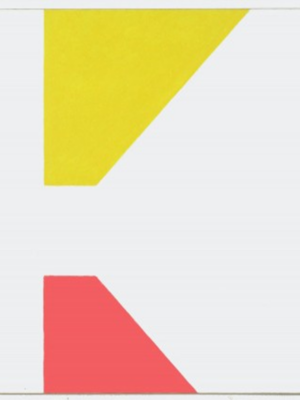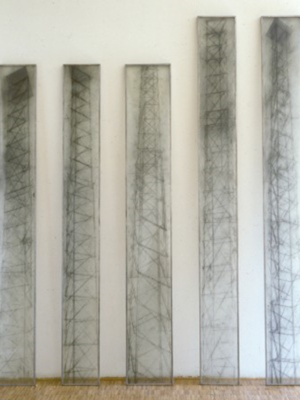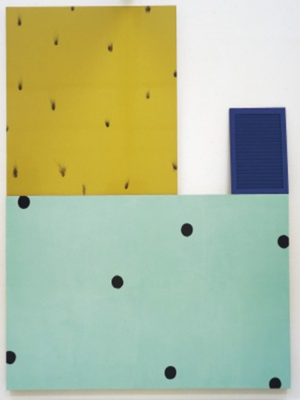…Less is more…
40 ans d’art minimal au Frac Sud
Du 20 janvier au 19 mai 2024
PROLONGATION jusqu’au 1er septembre 2024

Dans le cadre de ses activités « Hors-les-murs », le Frac Sud – Cité de l’art contemporain et le Bonisson Art Center organisent l’exposition …Less is more…
Le Frac Sud – Cité de l’art contemporain a pour missions le soutien à la création contemporaine, la transmission et la médiation pour un réel accès de tous à l’art contemporain. Créé il y a 40 ans, il mène de front une double programmation in situ et en région, entendant offrir à tous les publics la possibilité de découvrir l’art contemporain. Fort de plus de 1400 œuvres avec plus de 650 artistes représentés, le Frac Sud – Cité de l’art contemporain a su rester attentif à travers ses acquisitions à la pluralité des formes de recherche artistiques.
Le Bonisson Art Center souhaite intervenir dans la mise en lumière des œuvres, mais aussi dans le déroulement de la carrière des artistes. Il se fixe 3 missions prioritaires: le soutien à la création contemporaine, la diffusion de l’art contemporain dans son territoire, la formation des publics.
Cette exposition réunit des artistes de renoms et d’autres ayant plus récemment fait leur apparition dans le circuit de l’art contemporain. Des œuvres d’artistes régionaux, nationaux et internationaux se croisent, mettant en valeur différents médiums tels que le dessin, la peinture, la photographie, la sculpture ou encore l’installation.
Commissariat de l’exposition: Christian Le Dorze
L’ensemble des œuvres présentées appartiennent à la collection du Fonds Régional d’Art Contemporain Provence-Alpes-Côte d’Azur.
L’exposition se visite de manière libre aux horaires d’ouverture, du mardi au dimanche de 11h à 19h.
Des visites guidées de l’exposition sont organisées les dimanches à 16h sur réservation.

Martin Barré, 91-92 – 104 x 108 – B, 1991/1992.
Collection Frac Sud – Cité de l’art contemporain © Adagp, Paris, 2023

Bernard Moninot, Les tours, 1987.
Collection Frac Sud – Cité de l’art contemporain © Adagp, Paris, 2023

Noël Dolla, Jalousie V ou portrait d’un membre du P.C.F. dans sa cuisine en 1940, 1992.
Collection Frac Sud – Cité de l’art contemporain © Adagp, Paris, 2023
L’expression art minimal naît en 1965 chez le philosophe Richard Wolheim dans Arts Magazine. Cette appellation réductrice, définie par le souci d’économie de moyens ne sera cependant pas acceptée par certains artistes qui estiment que l’aspect sobre et « pauvre » de leur art ne suffit pas à le définir.
En 1965, l’architecte Ludwig Mies Van der Rohe, directeur du Bauhaus, commente l’art minimal par cette devise « Less is more » empruntée à Robert Browning, poète britannique.
Les mouvements abstraits antérieurs (suprématistes et constructivistes russes des années 1910 et 1920, abstraction géométrique) ont exercé une influence essentielle vers les techniques et les idées du minimalisme.
Dans les années 64-65, en réaction au débordement subjectif de l’expressionnisme abstrait américain et à la figuration du Pop Art, plusieurs artistes (notamment Ad Reinhardt, Donald Judd, Robert Morris, Sol Le Witt, Dan Flavin, Frank Stella, Carl André…) ont interrogé les limites conventionnelles de ce qui peut être considéré comme une œuvre d’art.
Ils ont publié à l’époque des articles qui ont façonné et décrit l’esthétique du minimalisme.
Le spectateur devait notamment facilement comprendre l’œuvre et que son interprétation dépendait du contenu et des conditions envisagées dans les objets. Ces artistes voulaient revenir à l’essentiel, à la matière brute, à l’espace. La trace de l’artiste s’efface presque totalement et aucune signification symbolique n’est revendiquée. Contrairement à l’art classique, les œuvres semblent en premier lieu dépourvues de charge émotionnelle.
L’art minimal se caractérise par des œuvres dépouillées à l’extrême, mettant l’accent sur l’espace, les éléments géométriques simples et la répétition (sérialité). Une œuvre doit donc être ni décorative, ni monumentale.
